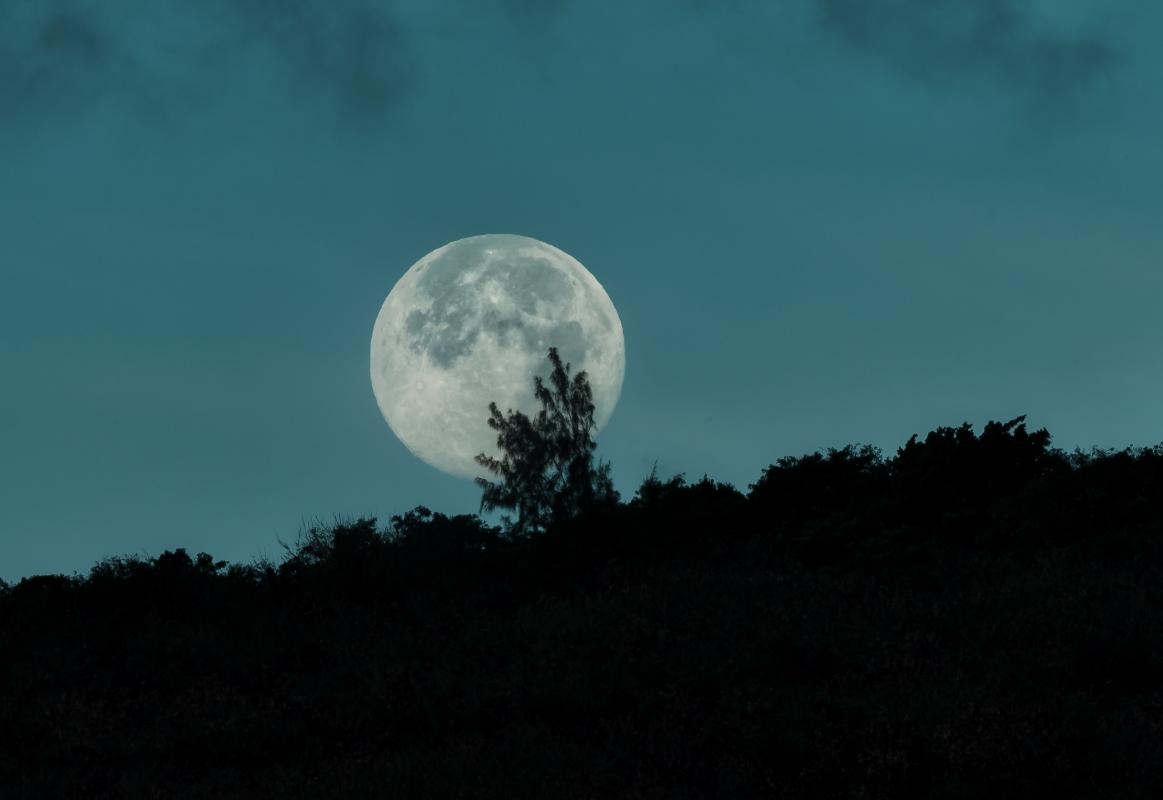Results & impact 10 October 2025
- Home
- Press area
- Press releases
- moonlight effect coffee trees
Moonlight disrupts the circadian clock of coffee trees

Science has previously shown that both moonlight and the lunar cycle can affect the biological cycles of many living beings. Plants, for their part, are particularly sensitive to local gravimetric variations caused by the moon rotating around the earth, which affect their growth and development. This explains why since time immemorial, many farmers, gardeners and foresters have planted and harvested according to the moon's cycle. But what about the light reflected by the moon?
Nobody knew about the effect of moonlight on plants until now!
Until now, there had never been a definitive answer to that question, which is very surprising since plants are known to be highly photosensitive. It is light that provides the energy they need to grow, as well as other information that governs their development. Plants are fixed photosynthetic organisms, and need to turn over the space of a day, and through the seasons, which they do by means of photoreceptors connected to their circadian clock (see box).
Strange goings-on in a greenhouse one moonlit night…
It was while studying the circadian cycle of coffee trees and the way it is disrupted by climate change that a CIRAD team led by Benoît Bertrand and Hervé Etienne noticed the atypical expression of some of the major genes in the circadian clock during the night. The plants in the greenhouse had been sampled on the day of the spring solstice, during a full moon. This sparked the researchers' curiosity, and they decided to study moonlight and attempt to reproduce it, in controlled conditions, since "moonlight" is in fact merely reflected sunlight (it is very weak in terms of energy, and mainly comprises blue and far red light). "What we found was that plant photoreceptors saw these low-intensity wavelengths as strong environmental signals", Jean-Christophe Breitler, a CIRAD geneticist, based in Mexico, explains.
One gene in seven is affected by moonlight
"By analysing the transcriptome of coffee trees, in other words the range of genes expressed, every three hours for 24 hours, under new moon and full moon conditions, we showed that 3387 of the 25 574 known genes in the coffee transcriptome were differentially regulated", he adds. Placing plants in a phytotron during a full moon, ie depriving them of its light, proved that it was indeed the light that was responsible, and not the local gravimetric change.
"Our analysis of the differentially regulated genes seems to show that coffee trees see moonlight as a form of stress. It disrupts not just the genes in the circadian clock, but also many others controlled by them, such as genes linked to photosynthesis, lipid biosynthesis, growth control, and response to oxidative and heat stress." All in all, the results showed that moonlight may stress coffee trees, although the over-expression of some genes suggests that the effect on growth is mainly positive…
Work is continuing to fully understand the effect of this type of light on plants, notably on their growth, which could be particularly useful for horticulture and market gardening.
What is the circadian clock and how does it work? It was a French mathematician and astronomer, Jean-Jacques Dortous de Mairan, who in 1729 first observed that most living organisms showed circadian rhythms over periods of around a day. In humans, for instance, this takes the form of a sleep/wake cycle. Since the 1950s, these rhythms have been known to be the visible proof of an internal biological clock whose purpose is to set a subjective timeline. From cyanobacteria to fungi, plants and animals, vast numbers of organisms have this type of clock. Modern science has shown that the circadian clock is made up of major transcription factors, in other words proteins that control the expression of a large number of genes. It enables organisms to anticipate foreseeable changes in their environment by adjusting their developmental and physiological characteristics. In plants, the clock oscillates independently of any external cues, but is reset each day by time setters or synchronizers such as light or temperature. |
Reference
Full moonlight-induced circadian clock entrainment in Coffea arabica . BMC Plant Biology.
J-C. Breitler, D. Djerrab, S. Leran, L. Toniutti, C. Guittin, D. Severac, M. Pratlong, A. Dereeper, H. Etienne and B. Bertrand.



























